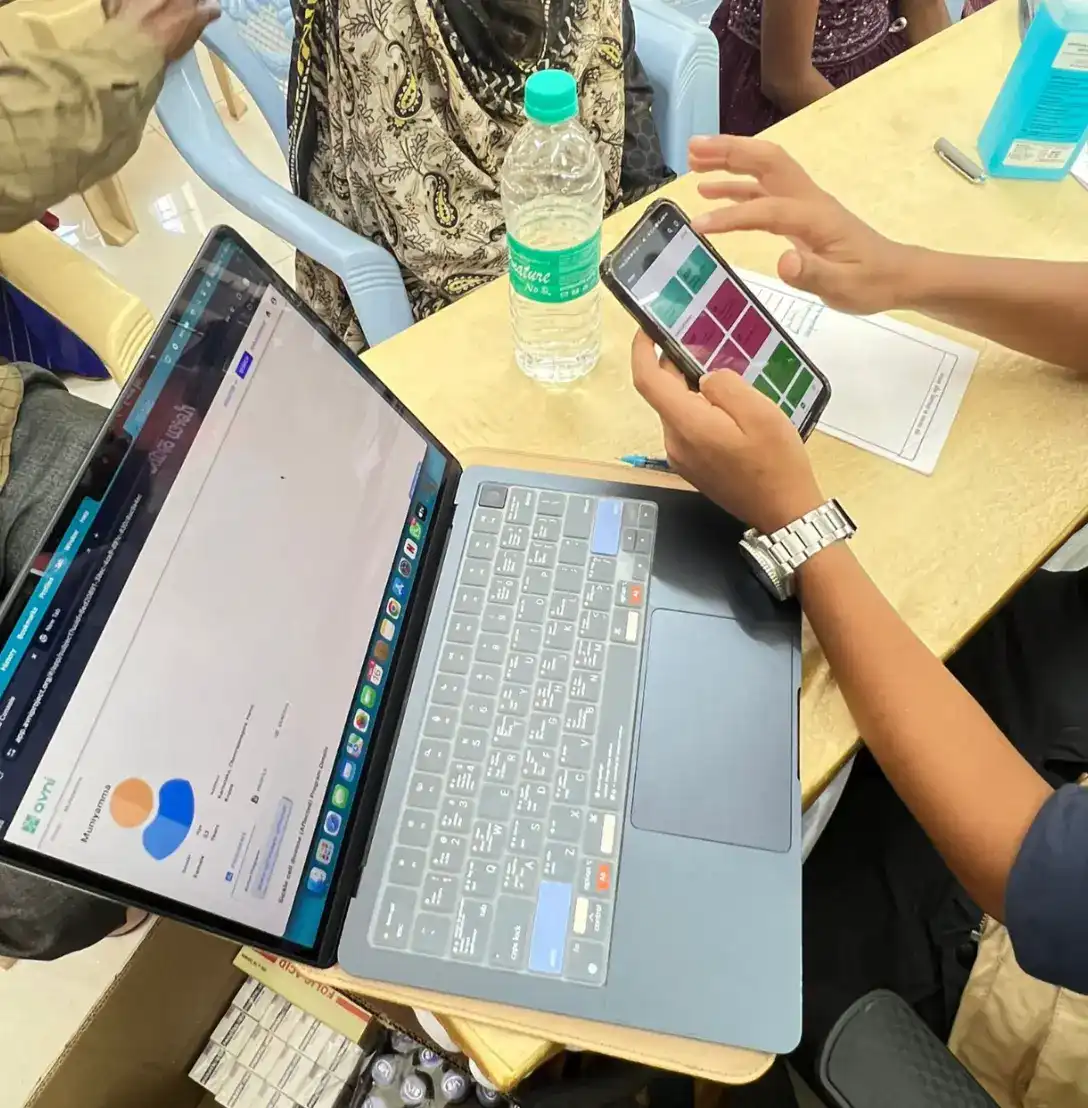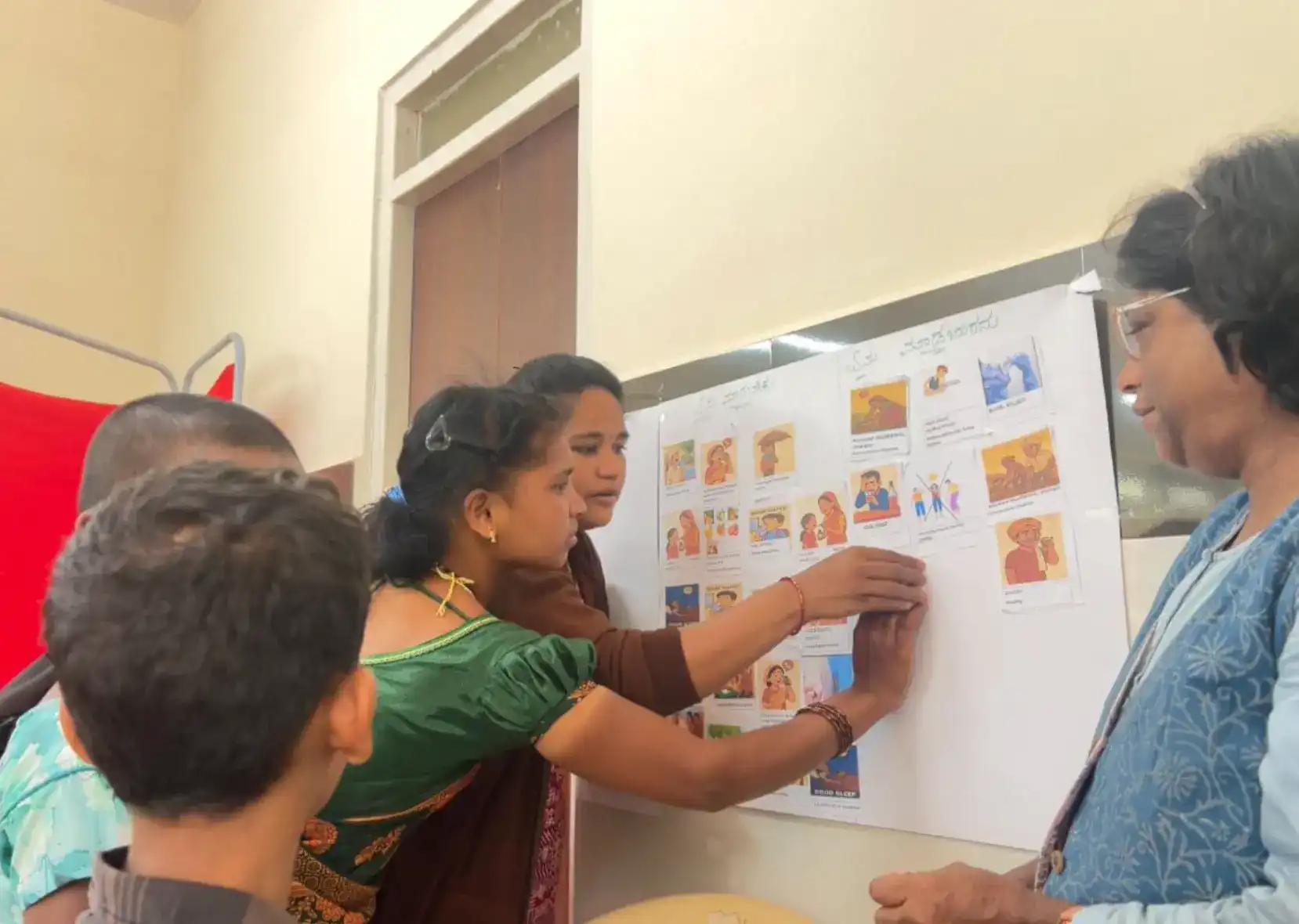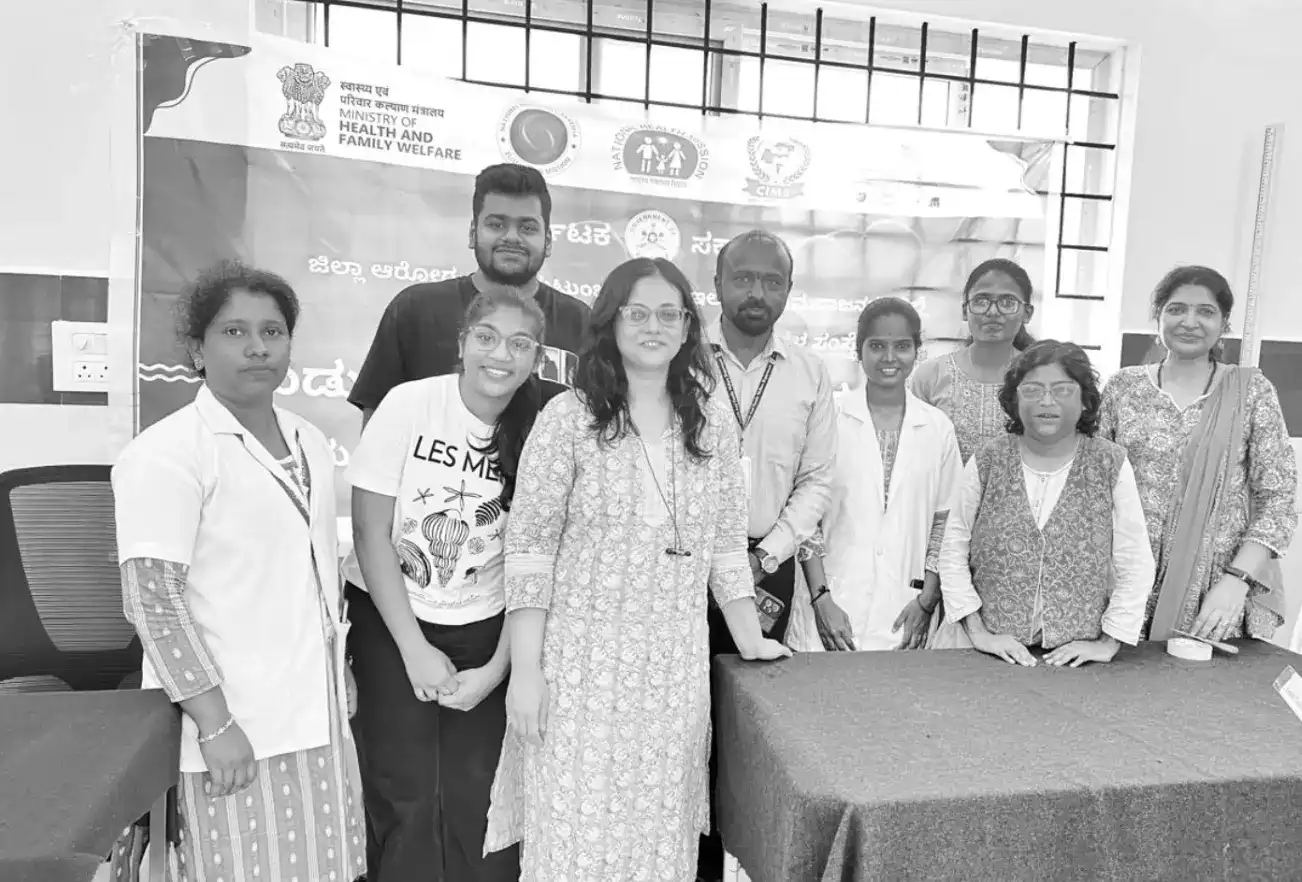Field Visit to Kollegal Government Hospital – How Avni is Transforming Public Health Data Collection
May 19, 2025 by Rishika Methi
A firsthand account of how Avni is revolutionizing grassroots healthcare through digital data tools. Insights from a business development associate's field visit to Kollegal Government Hospital, highlighting the shift from paper-based systems to efficient, real-time digital workflows.
As a Business Development Associate at Avni, I recently had the privilege of visiting Kollegal Government Hospital during a monthly health camp organized by the Institute of Public Health (IPH) in Chamarajanagar district, Karnataka. This wasn’t just a routine site visit—it was a window into the real-world impact of digital healthcare tools.
A Glimpse into Ground-Level Healthcare Delivery
The health camp focused on sickle cell disease and followed a structured care flow:
- Patient Registration
- Medical Consultation
- Follow-up Planning for Ongoing Care
It was humbling to see doctors treating patient after patient with such focus and compassion. Their work reminded me that healthcare is more than a service—it’s a commitment to community well-being.
From Paperwork to Seamless Digital Systems
Before Avni, frontline health workers relied on paper registers, physical forms, and repetitive data entry. This was not only time-consuming but also prone to error.
With Avni’s easy-to-use mobile interface, tasks like patient registration, history tracking, and categorization (mild/moderate/severe) are now seamlessly handled in one place. As Dr. Swati from IPH noted:
“Earlier, we relied on manual data entry, but now our team inputs everything directly through mobile devices—it’s become second nature. The paperwork has reduced drastically... We only hope the government adopts this system in the future.”
Real Feedback from Real Users
We spoke to Dr. Swati, Dr. Joshua, and field workers who use Avni daily. Here's what they told us:
What’s Working Well
- Easy access to patient history
- Reduced duplication of work
- Offline functionality works reliably
What Could Be Improved
- Mobile Editing: Editing visits or reports is limited. Often, a new visit is created instead of updating the existing one.
- Flexible Medication Scheduling: Users can't specify non-standard dosage patterns (e.g., alternate days, twice a week).
These insights are incredibly valuable and help us shape both the product roadmap and our communication strategy.
Engaging the Community
A fun and interactive moment was an awareness activity for children on the "Do’s and Don’ts of Sickle Cell Disease." Children who answered correctly were rewarded—making healthcare education engaging and memorable.
Key Takeaways from the Field
1. Seeing the System in Action
This visit helped me appreciate the logistics and human effort behind every patient interaction—and how critical Avni is in supporting it.
2. Beyond Software—We Enable Impact
Avni brings more than digital efficiency—it brings peace of mind and helps healthcare workers serve their communities better.
3. Trust is Built on the Ground
Face-to-face interaction with users builds credibility and ensures we stay aligned with real-world needs.
4. Feedback Powers Strategy
Positive reviews of Avni’s offline usability and structure reinforce our value, while improvement suggestions guide our future direction.
Final Reflections
This field visit changed how I view public healthcare. It helped me understand the dedication behind each patient’s care and how digital tools like Avni play a pivotal role in enabling it.
We’re not just building software—we’re empowering those who serve. A big thank-you to my mentors and teammates at Samanvay for making this visit possible. It left me with a deeper sense of purpose and belief in the impact of our work.
We’re not just building apps—we’re enabling better health outcomes, one screen at a time.


